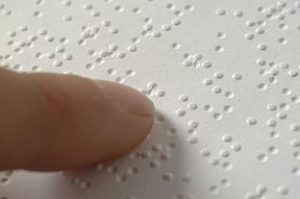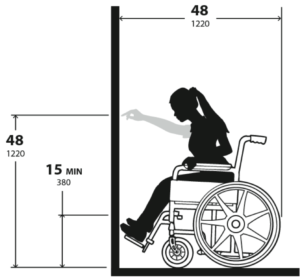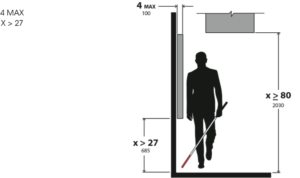Did you know that that January is National Braille Literacy Month?
 National Braille Literacy Month is recognized each year during the month of January to help promote the importance of the Braille system to the blind and visually impaired community.
National Braille Literacy Month is recognized each year during the month of January to help promote the importance of the Braille system to the blind and visually impaired community.
Educating oneself and others about visual impairments, blindness, and Braille is essential for promoting its prolificacy.
As members of the digital signage industry, it is crucial that we consider its usage and take ADA compliant measures to ensure integrations are ideal for the estimated 253 million people who live with vision impairment(1).
Ensuring ADA Compliance in Integrations
In 1990, the Americans with Disabilities Act (ADA) was signed into law to prohibit discrimination and ensure equal access and opportunity for those with mental and physical disabilities in the areas of employment, public entities, public accommodations, commercial facilities, telecommunications and more.
In 2010, additional provisional regulations were signed into effect to revise the area of Accessible Design, enhancing the lifestyles of the over 54 million disabled Americans. These regulations ensure that public spaces have, among other accessibility features, clear pathways, and curbed ramps. 
Kiosk Integrations
If a kiosk device has Braille or touch features, the maximum height off the ground is 48″, with a max reach of 10″. A reach larger than this requires a shorter kiosk.
With new technology, integrating ADA compliant kiosks has become easier. Advanced IR sensors are used to determine height and cater the placement of touch items on displays in accordance with ADA regulations.
A multitude of additional options exist for compliance in digital signage, including voice responsive software, Braille keyboards, and tactile signs.
Video Wall Integrations
Video walls also require special considerations. For example, video walls that are between 27″ and 80″ off the floor must be less than 4″ off the walk to allow for the visually impaired to easily walk past.
 In the past with large and bulky displays, ensuring compliance in this area was a bit more complicated. Most often, this required integrators to recess displays into the wall, which took more time and was often more complicated and expensive.
In the past with large and bulky displays, ensuring compliance in this area was a bit more complicated. Most often, this required integrators to recess displays into the wall, which took more time and was often more complicated and expensive.
Now, displays are getting slimmer and lighter. For example, many of Samsung’s commercial displays measure in at around 2″ deep or less. These displays combined with our 1.87″ DS-VW755S mount’s quick release function for service and accessibility make ADA compliance easy.
For additional details on ADA compliant design, comment on this blog—we would be happy to answer any questions you may have.
(1) Bourne RRA, Flaxman SR, Braithwaite T, Cicinelli MV, Das A, Jonas JB, et al.; Vision Loss Expert Group. Magnitude, temporal trends, and projections of the global prevalence of blindness and distance and near vision impairment: a systematic review and meta-analysis. Lancet Glob Health. 2017 Sep;5(9):e888–97.